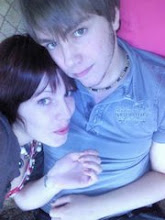So, the mechanics of a game are what the game designer has full control over. Mechanics influence Dynamics and how the game is ultimately played out, these Dynamics then influence the player (hopefully) resulting in an emotional response. In order to create an emotional response from the player, we must focus on Mechanics that will create this response.
"We cannot create drama; we can only create the circumstances from which the drama will emerge."
- Marc LeBlanc, Tools for Creating Dramatic Game Dynamics
This quote embodies the strongest message that must be taken from this reading; a games designer cannot directly 'create' drama, the Mechanics give birth to the circumstances required to create the intended drama. It is important to remember that the emotional response is left to the player to understand, and as a designer it is hard to create something that will cause the same emotional response in every single player (People feel differently y'know!). In order to construct these circumstances LeBlanc proposes the use of a tool called the Dramatic Arc...
Using this graph makes it much easier to understand the Dramatic Arc. After the exposition, action begins to rise absorbing the player into the story as it progresses. This creates increased tension and helps to prompt emotional responses before it reaches its peak, the climax. The game quickly shifts from its uncertainty and tension, to the action beginning to fall until it eventually achieves resolution. LeBlanc states that it is important to not reach the climax too early, otherwise risk the player feeling that the resolution was rushed, thus not enjoying the game.
The drama created using this Dramatic Arc plays on two main factors for games design: Inevitability and Uncertainty. These can be controlled separately by using individual game Mechanics. The Mechanics must be balanced in order to create the intended emotional response. Using Chess as an example for Inevitability, we can see that it is represented by a ticking clock. The ticking clock is simply represented by the amount of pieces the game has, as the game progresses and pieces are destroyed there are less and less on the board. This creates a similar effect to a timer, counting down to the inevitable demise of your opponent (or yourself).
Drama cannot be achieved unless Uncertainty is also used in the correct circumstances (alongside Inevitability). Uncertainty prevents players from immediately seeing the outcome of the game, thus removing any tension that may have been created. A prime example of this is the Fog of War used in many RTS games such as Starcraft, Warcraft, Battle for Middle Earth etc. The Fog of War creates a type of 'veil' over enemy bases and troops, obscuring the player's view of what the enemy is up to. This creates a great deal of tension and Uncertainty as the player has no clue as to what the enemy is building/collecting/planning...
It must be noted that if Uncertainty is used without Inevitability it is hard to sustain the drama that has been created, you have been warned!
Uncertainty and Inevitability are not the only tools in our arsenal to prompt emotional responses. Force and Illusion can be used to invoke strong emotions within the player. We can Force the player to change the game state in order to change their perception of the situation. Using this Force we can cause the game dynamics to change and make the player feel strong dramatic tension. Illusion can create tension by changing the game state, as previously mentioned with Fog of War - the player can be lulled into a false sense of security and feel as though they are about to win the game, when really they could be minutes from losing.
LeBlanc also makes mention of positive and negative feedback systems. These Mechanics manipulate the game, changing the way a player reacts to that game:
- Positive Feedback - The 'leader' of the game is granted a large advantage over the other players, creating tension. For example, when playing Liar's Dice the leader has more dice than their opponents, giving them a distinct advantage over the other players.
- Negative Feedback - The losing player receives a hidden boost, or handicap on the leader(s). This then reduces the distance between the opponents, creating uncertainty and thus dramatic tension. A prime example of this would be any of the Mario Kart series, the player in last place is granted much more powerful item pickups allowing them to quickly work up to first place!
I have learned a lot about how to create dramatic tension (indirectly) within a game from this article, along with how important it is! There are very few games that do not create some kind of emotional response within the player, without dramatic tension (of all kinds!) the game would not be entertaining, and re-playability would dwindle.
And i shall sign off with the immortal words of Arnold Schwarzenegger in Terminator 2: Judgement Day -
"I need your clothes, your boots, and your motorcycle."
- Arnie
Wait, was that right?










good notes. While we can change the game state with force, illusion is much more subtle. If players see those behind them getting an advantage, the leading players may see this as unfair, so illusionary feedback mechanisms are generally better.